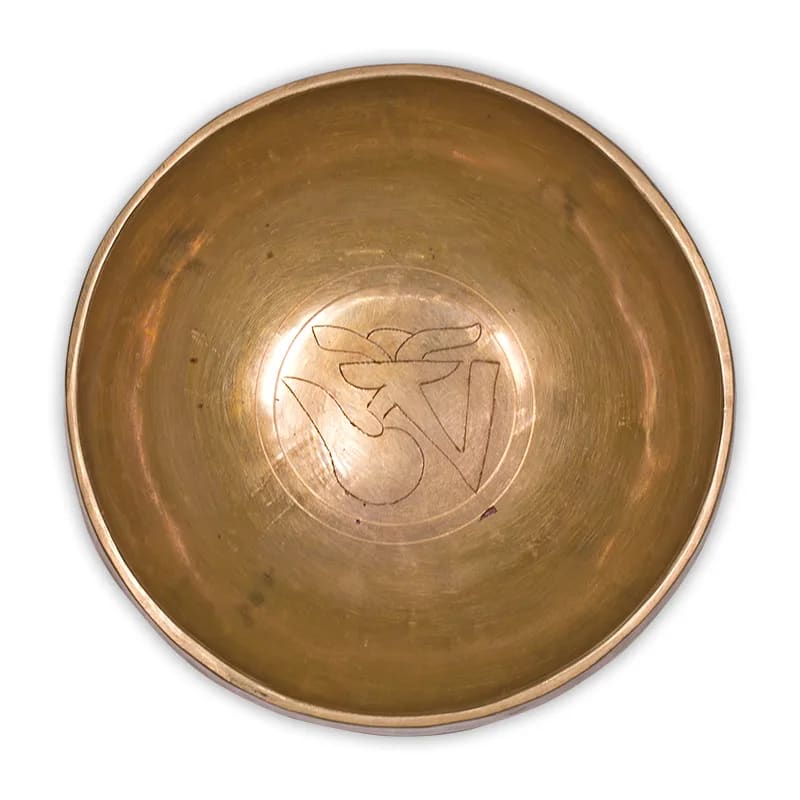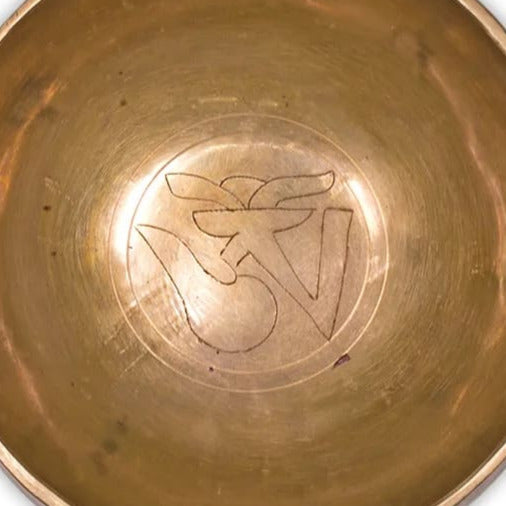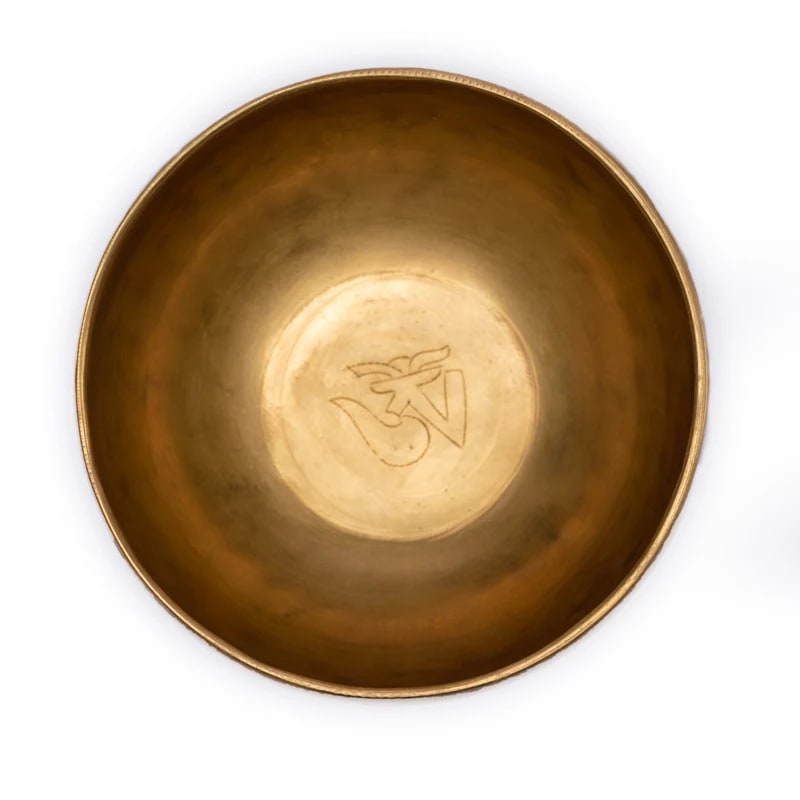Tibetan bowl with engraved 'Om', sold with a free matching mallet. Sizes available from 10 to 30 centimeters. Very good quality, tested and approved!
Tibetan bowl with engraved 'Om', sold with a free matching mallet. Sizes available from 10 to 30 centimeters. Very good quality, tested and approved!
Couldn't load pickup availability
Tibetan bowl with engraved 'Om', 10 to 30 centimeters, sold with a free matching mallet. Very high quality, tested and approved!
About the product:
- Classic 7-metal Tibetan singing bowl with the OM symbol engraved inside.
'Om' is considered the primordial sound or the sound of creation in various spiritual traditions, including Hinduism and Buddhism. It is believed to be the sound that resonated at the beginning of the universe and to be the essence of all existing sounds. - Handmade in copper, tin and 7 noble metals: copper, tin, nickel, zinc, iron, lead, mercury, silver.
- A classic, hand-hammered singing bowl with its own unique sounds.
- Choose your cushion according to the photos
- + Free: We will choose the mallet best suited to the bowl size.
Please note:
The percentages of metals, diameter and thickness of the different bowls provide the specific sound and harmonics of each singing bowl.
Each bowl is therefore unique.
Please note: All our handmade singing bowls are sorted by weight.
The diameter mentioned is an approximate indication, so that you have a general idea of the width of the bowl.
Large mallets with heads of more than 4 centimeters are reserved for bowls of more than 20 centimeters.
Equivalence of notes and frequencies:
DO4 /C = 257 Hz
RE4 / D = 289 Hz
MI4 / E = 324 Hz
FA4 / F = 343 Hz
SOL4 / G = 385 Hz
A3 / A = 216 Hz
SI3 / B = 244 Hz
Information on the process of hammering Tibetan singing bowls:
The process of hammering singing bowls is done entirely by hand.
Each singing bowl is hammered following a series of procedures that will give the bowl the perfect shape.
During the manufacturing phase, different metals that make up the bowl are melted in a furnace (copper, tin, iron, lead, gold and silver) depending on the type of bowl desired, such as bronze bowls or those of the seven metals.
The molten metal is then poured into a mold to obtain a metal disc of the desired size and thickness.
At this stage, the metal disc is modeled after being weighed and measured very precisely and then is classified according to the type of bowl to come.
As for the actual hammering process, 4 or 5 discs are stacked on top of each other and then heated until they become incandescent.
The formed glowing metal disc is then hammered by skilled craftsmen until the metal is no longer hot; then it is heated again and hammered again.
These two operations, heating and hammering, continue until the desired shape and size are obtained (which explains why hammered singing bowls can have differences of a few centimeters from each other).
When hammering bowls, the metal disc should be beaten while it is still hot, because it is more flexible.
Once cooled, in fact, the metal loses its flexibility and becomes increasingly brittle, thus risking cracks that would occur if it is struck.
After obtaining the desired shape, the stages of manufacturing the bowl itself begin.
Each bowl is brought to the desired shape and size, repeating the heating and hammering phase if necessary.
Once the desired shape and size are achieved, the bowl is hammered to perfection. Individual bowls are then chiseled and finished inside and out.
Share






